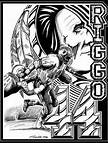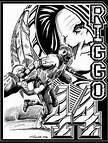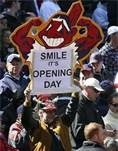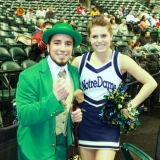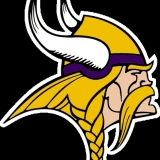Shakespeare could wax poetic about 'What's in a Name?' because he didn't have to contend with sports mascots.
It's the politically-correct issue in America that refuses to subside. There are just some topics that blur the bigger picture of an ethically responsible society, and complaining that mascots can be degrading is near the top of the list.
A quick check of Webster's Twentieth Century Unabridged Dictionary defines 'mascot' as 'any person, animal, or thing supposed to bring good luck by being present.' So, it would seem that a team mascot is an honorable title. Most mascots in American sports had their origins in the early 1900s. Back then, teams fumbled around with quaint monikers until they gradually realized the tremendous marketing value they carried. The New York Highlanders became the more regionally-identifiable Yankees, for instance, even though that was an old Southen slur for Northerners which was itself most likely derived as a British slur for Dutch settlers in 'olde' New Amsterdam.
One of the earliest attempts at humor in mascot-anointing was made by the Brooklyn nine of baseball's National League. Urban legend wasn't a known phrase back then, but it farily describes the allusion to fans who 'dodged' trolley fares to get a free ride to Ebbetts Field and watch the game. Those 'bums' were called Dodgers, and their favorite team became christened as such.
Ironically, that drift toward the whimsical --- probably intended to portray sports in its proper context as a divertissement of life --- may have been the root of indignation two generations later.
The social upheavals of the 1960s and early 1970s were certainly justified. Civil rights needed to come to the fore, and the resultant improvement in how all peoples were perceived was a great step forward for mankind. Still, there's a difference between significant awareness and pedantic perception in any movement. Thus, when certain Native Americans first raised the mascot controversy in headlines of the time, the attention afforded was only due to its being sucked into the backdraft of searing human rights campaigns.
Think about it. Native Americans aren't alone in being designated as mascots. In accordance with Webster's Dictionary definition, other persons given the distinction include the Irish (University of Notre Dame) and Scandinavians (Minnesota Vikings). Both of these ethnic groups endured their moments of discrimination in the annals of American history, too. So far, neither has mounted a protest about being characterized as a good luck symbol for a sporting organization.
Don't even try to broach the 'caricature' argument as a reason why the Native American situation is different. Perhaps Notre Dame uses a leprechaun logo now, but the term 'Fighting Irish' was a clear reference to barroom brawlers, a stereotypical low-life trait at which immigrants from the Emerald Isle were perceived to be quite proficient. As to the Scandinavians, there is no evidence that even one Viking was ever so dim as to go into battle with a set of heavy horns on his helmet; why would any warrior charge into a kill-or-be-killed scenario wearing anything that could directly impede his ability to win? (The image of horns came from priests' drawings of Viking attacks, attempting to equate them to the Devil incarnate, and it was Wagner who popularized this image when he staged his epic Ring of the Niebelung.)
Cleveland's baseball team sorted through a number of mascots in their early days. 'Spiders' just didn't have that 'je ne sais crois' of marketing sizzle. They were the 'Naps' for a while, in honor of their star player-manager, Napoleon Lajoie. So, when they finally settled on 'Indians' in correlation to one of their first star players --- Louis Sockalexis, a Native American --- the monicker may not have begun as a tribute to him, but it has since memorialized his legacy. The evidence indicates the term was derogatorily applied to all members of the Cleveland team in the 1890s because it dared to have the fortitude to allow an Indian to play for them. Since then, Sockalexis has been recognized as being as much of a pioneer for minority involvement in major sports as the great Jackie Robinson was fifty years later.
The Washington Redskins originated in Boston, home of baseball's Red Sox and Braves in the 1930s. They were also called the Braves back then, because they played in that team's stadium. However, when they wound up getting better terms to locate in Fenway Park, they didn't want to confuse the paying public by being Braves but playing in the Red Sox stadium. Their solution made sense: they incorporated references to their origins and their new game site by changing their name to Redskins. The logic apparently didn't register with enough fans as much as winning did, though, and the team soon took its sorry record to the nation's capital.
The point here is that the Redskins name wasn't derived as a slur, but as a facilitation to distinguish the team's new --- albeit transitional --- home. Furthermore, to be fair, the Redskins organization has only used a noble image as a symbol of the name. Washington DC is one of the most liberal cities in North America, with its population's majority consisting of minorities. The connotation of that nickname being demeaning, as in the Cleveland Indians case, just doesn't emerge from its context.
It seems clear, then, that the mascot controversy has its sole value in the publicity it gives those organizations who are raising it. Pro and college sports are more visible than ever in the USA, and what better way is there to affix one's organization to higher 'page rankings' than making headlines in the Sports section of newspapers and broadcasts?
Mascots, no matter how commercialized, are still nothing more than whimsical symbols. Society as a whole understands that, just as it realizes the stylized violence in Grimm's Fairy Tales leaves no lasting scars on the psyches of children who innocently absorb them. Those who claim to the contrary only risk trivializing themselves and the credibility of their greater cause.
Nowhere in the country do such topics remain in a lighthearted perspective more than in Orofino, Idaho. That's the site of the state's mental hospital. The local high school's teams are called the Maniacs.
No one protests, unless the teams don't play hard.


